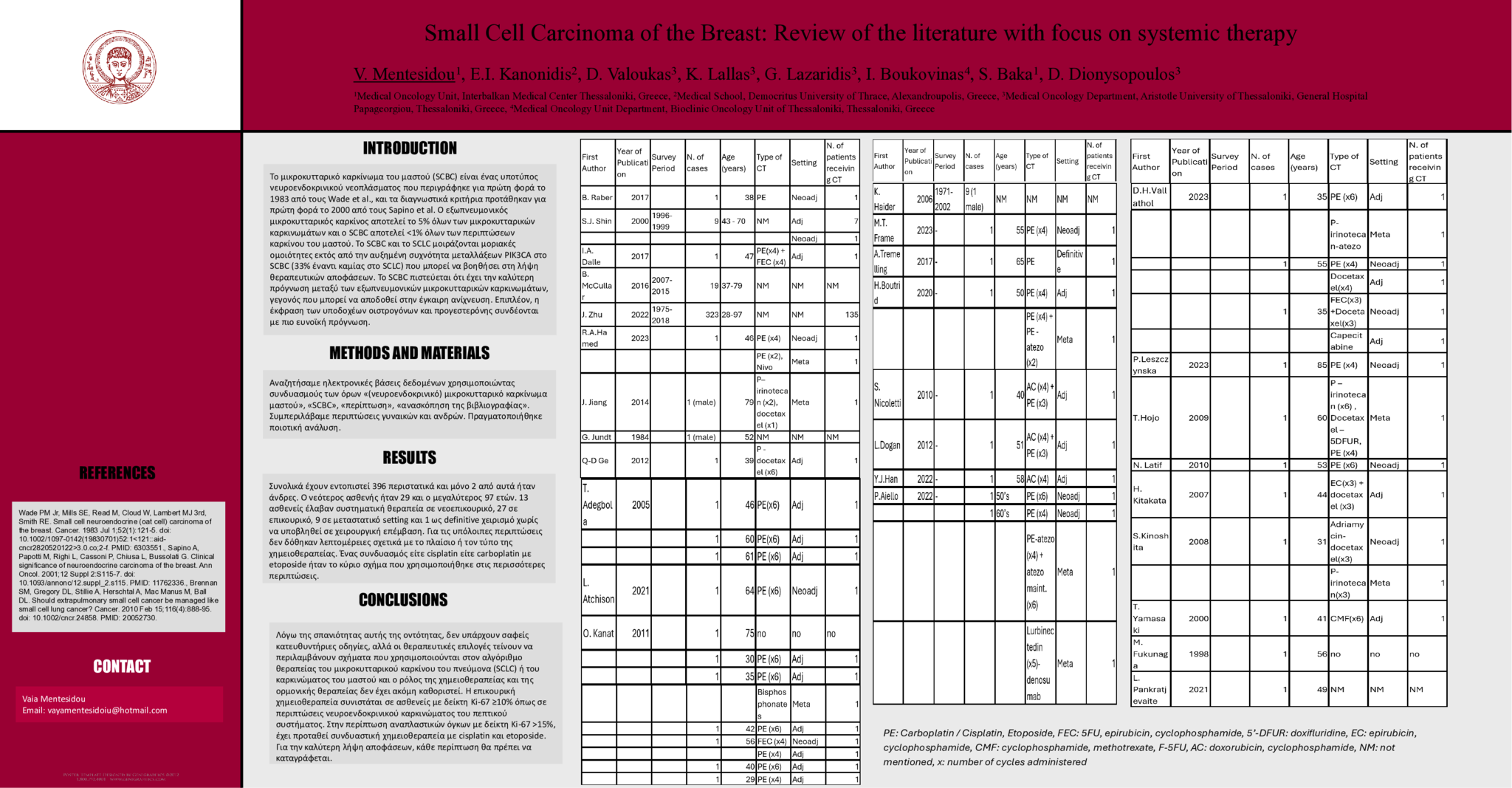Background Small Cell Carcinoma of the Breast (SCBC) is a subtype of neuroendocrine neoplasm that was first described in 1983 by Wade et al., and diagnostic criteria were first proposed in 2000 by Sapino et al. Extrapulmonary small cell cancer constitutes 5% of all small cell carcinomas, and SCBC constitutes <1% of all breast cancer cases. SCBC has the best prognosis among the extrapulmonary small cell carcinomas due to early detection. Methods We searched electronic databases using combinations of the terms “(neuroendocrine) small cell breast carcinoma”, “SCBC”, “case”, “review of the literature”. We included both female and male cases. Quantitative analysis was conducted. Results A total of 396 cases have been identified and only 2 of the cases were male. The youngest patient was 29 and the oldest 97 years old. 13 patients received systemic therapy in the neoadjuvant setting, 27 in the adjuvant, 9 in the metastatic setting and 1 as a definitive treatment without undergoing surgery. A combination of either cisplatin or carboplatin plus etoposide was the main regimen used in most settings. The table contains the following data: year of publication, survey period, number of cases, age, type of chemotherapy and setting used. Conclusions Due to the rarity of this entity no management guidelines exist but the therapeutic choices tend to include regimens used in the treatment algorithm of SCLC or breast carcinoma and the role of chemotherapy and hormonal therapy has yet to be established. Adjuvant chemotherapy is recommended for patients with a Ki-67 index of ≥10% as in cases of neuroendocrine carcinoma of the digestive tract. In the case of anaplastic tumors with a Ki-67 index of >15%, combination chemotherapy using cisplatin and etoposide has been suggested. In order to help decision – making strategies, each case should be documented.




